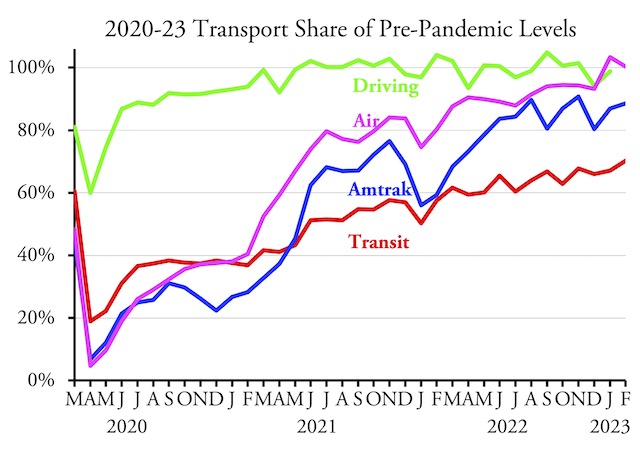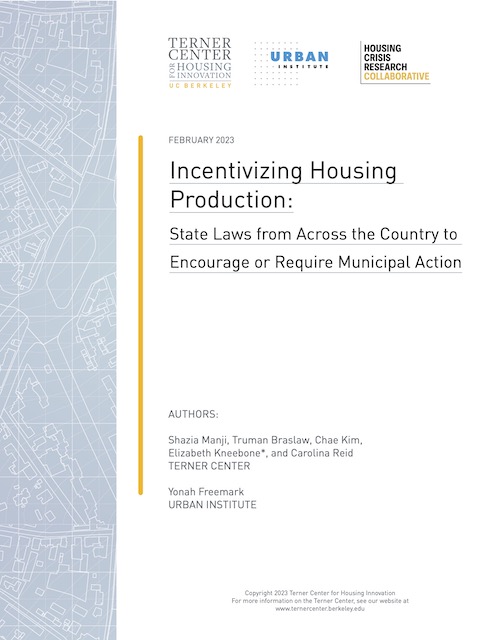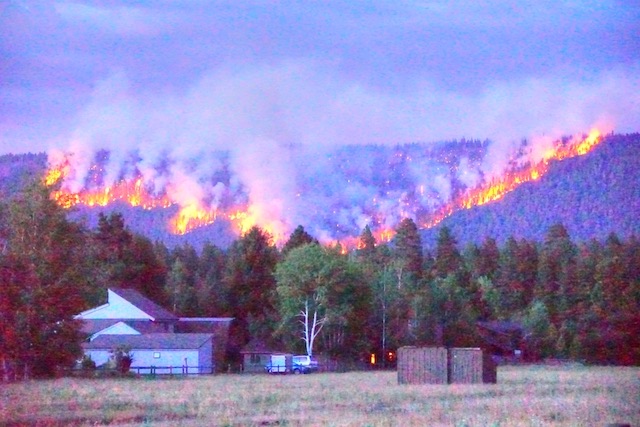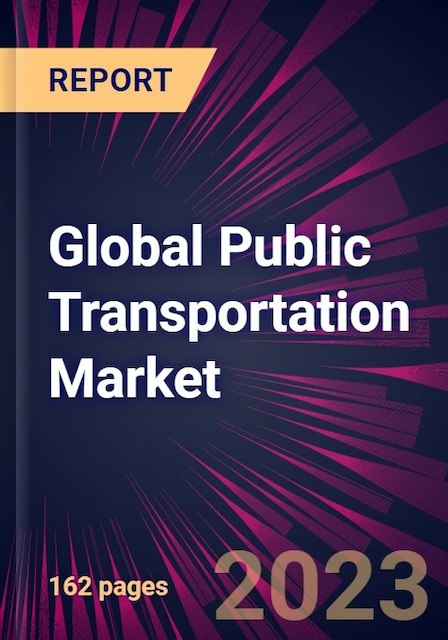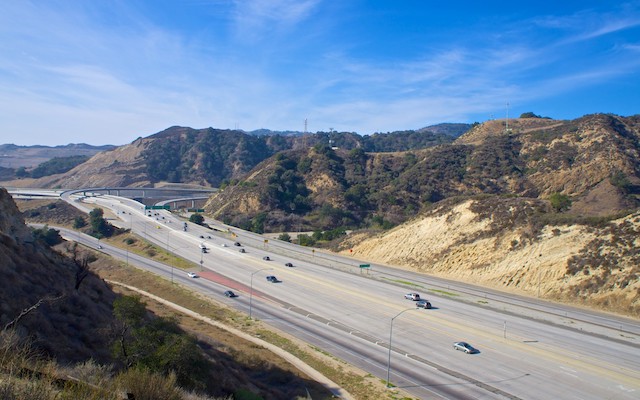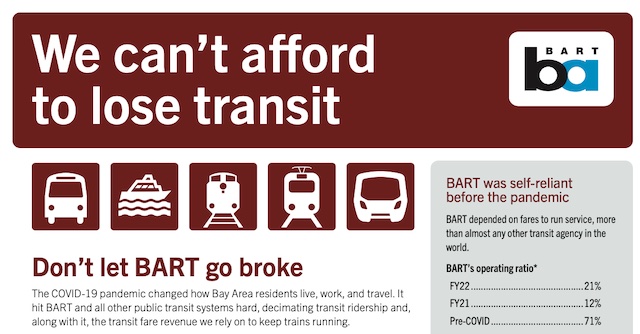Public transit carried 70.2 percent as many riders in February 2023 as it did in the same month in 2019, according to data released by the Federal Transit Administration late last week. This is the first time ridership has exceeded 70 percent of 2019 numbers since February 2020.
The transit line on this chart has been updated to reflect the latest adjustments to the National Transit Database going back to late 2020.
Amtrak, meanwhile, reports that it carried close to 89 percent as many passenger-miles and the Transportation Security Administration reports that airlines carried more than 100 percent as many passengers in February 2023 as in February 2019. February highway data will be released later this month. Continue reading

